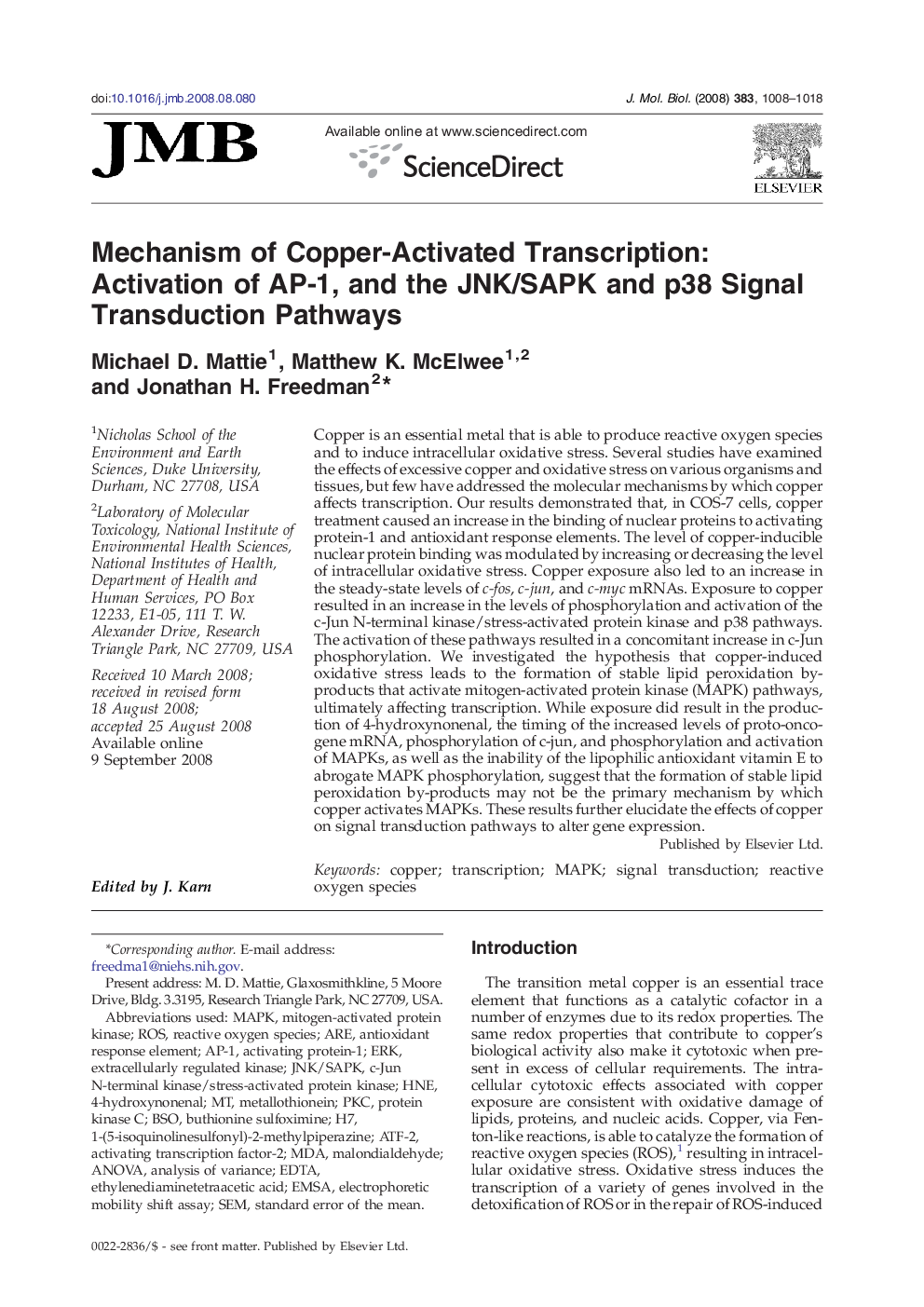| Article ID | Journal | Published Year | Pages | File Type |
|---|---|---|---|---|
| 2186858 | Journal of Molecular Biology | 2008 | 11 Pages |
Copper is an essential metal that is able to produce reactive oxygen species and to induce intracellular oxidative stress. Several studies have examined the effects of excessive copper and oxidative stress on various organisms and tissues, but few have addressed the molecular mechanisms by which copper affects transcription. Our results demonstrated that, in COS-7 cells, copper treatment caused an increase in the binding of nuclear proteins to activating protein-1 and antioxidant response elements. The level of copper-inducible nuclear protein binding was modulated by increasing or decreasing the level of intracellular oxidative stress. Copper exposure also led to an increase in the steady-state levels of c-fos, c-jun, and c-myc mRNAs. Exposure to copper resulted in an increase in the levels of phosphorylation and activation of the c-Jun N-terminal kinase/stress-activated protein kinase and p38 pathways. The activation of these pathways resulted in a concomitant increase in c-Jun phosphorylation. We investigated the hypothesis that copper-induced oxidative stress leads to the formation of stable lipid peroxidation by-products that activate mitogen-activated protein kinase (MAPK) pathways, ultimately affecting transcription. While exposure did result in the production of 4-hydroxynonenal, the timing of the increased levels of proto-oncogene mRNA, phosphorylation of c-jun, and phosphorylation and activation of MAPKs, as well as the inability of the lipophilic antioxidant vitamin E to abrogate MAPK phosphorylation, suggest that the formation of stable lipid peroxidation by-products may not be the primary mechanism by which copper activates MAPKs. These results further elucidate the effects of copper on signal transduction pathways to alter gene expression.
